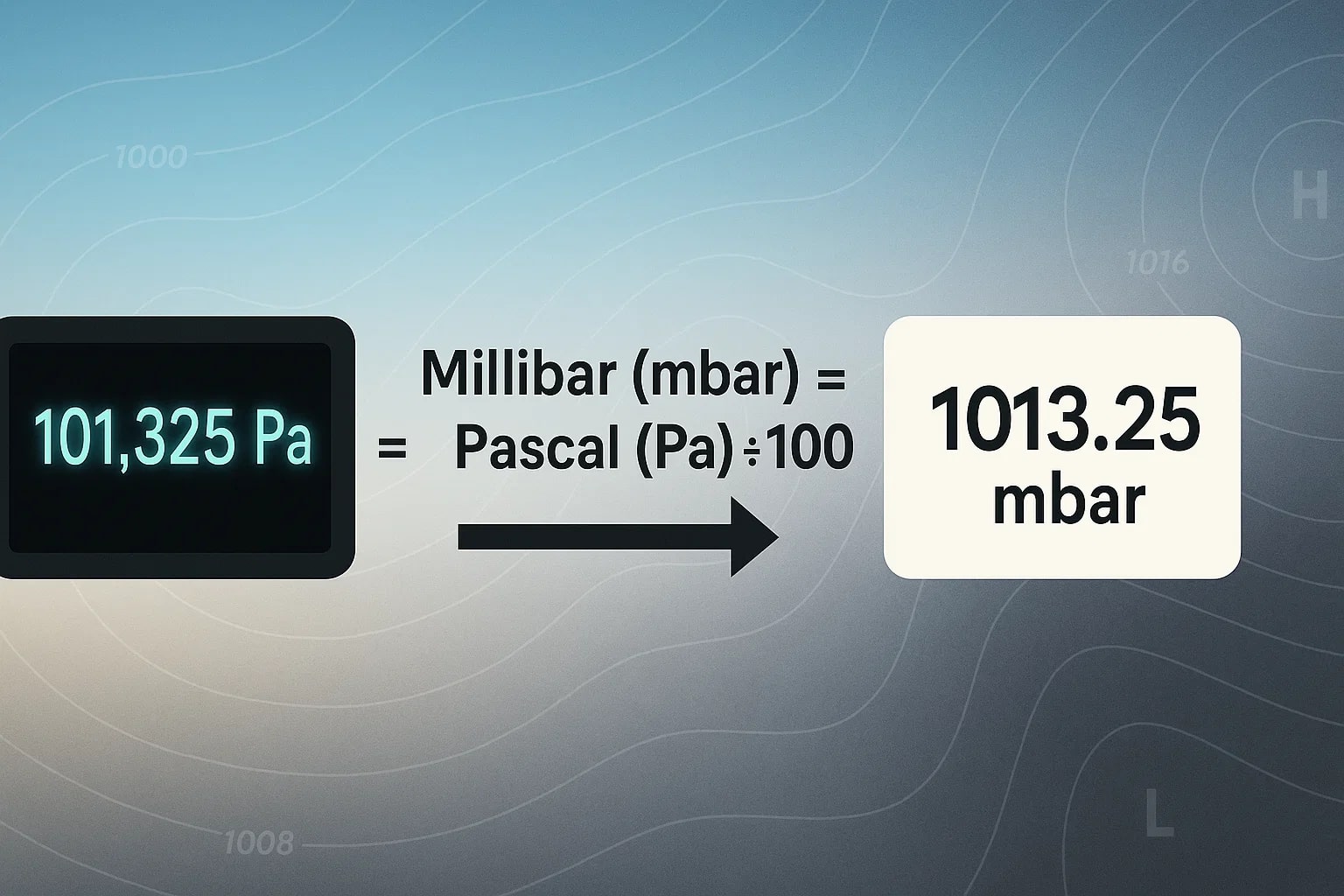pascal to millibar – How to convert Pa to mbar
The pascal (Pa) is the SI base unit for pressure, used in science, engineering, and physics. The millibar (mbar), however, remains popular in meteorology and aviation. Converting pascal to millibar helps bridge the SI system with practical applications like weather forecasts, storm tracking, and flight safety.

What is a pascal (Pa)?
A pascal equals one newton per square meter. It is the universal SI unit of pressure but is quite small for large-scale uses, so multiples like kPa or MPa are often applied.
What is a millibar (mbar)?
A millibar equals 100 pascals. It has long been favored by meteorologists to express atmospheric pressure. Standard sea-level pressure is about 1013 mbar.
How to convert pascal to millibar
Millibar (mbar) = Pascal (Pa) ÷ 100
Example:
Millibar = 101,300 Pa ÷ 100 = 1013 mbar
For fast results, use the Conversion Tools. Other handy calculators, like the Speed Converter, are also available.
Do you know?
-
About pascal: A human whisper creates a sound pressure of around 20 micropascals (0.00002 Pa). Compare that with 101,325 Pa of atmospheric pressure!
-
About millibar: Hurricanes are often classified by central pressure. A Category 5 hurricane typically has pressures below 920 mbar, a key factor in its destructive power.
How Weather Became Easier to Read
In the 19th and 20th centuries, meteorologists debated how to express atmospheric pressure. While scientists leaned toward pascals, the public found millibars easier to understand and compare. Weather maps, aviation charts, and newspapers adopted millibars to communicate storm strength in simpler numbers.
Even today, while international agencies use pascals for precision, millibars remain deeply ingrained in forecasting. This conversion allows scientists to work with SI standards while still giving the public easy-to-read data.

Numbers That Speak to Everyone
The formula is simple: divide pascals by 100. But converting Pa to mbar ensures that pressure measurements are useful to both scientists and society. From storm warnings to safe flights, this conversion keeps technical precision and public clarity walking hand in hand.

